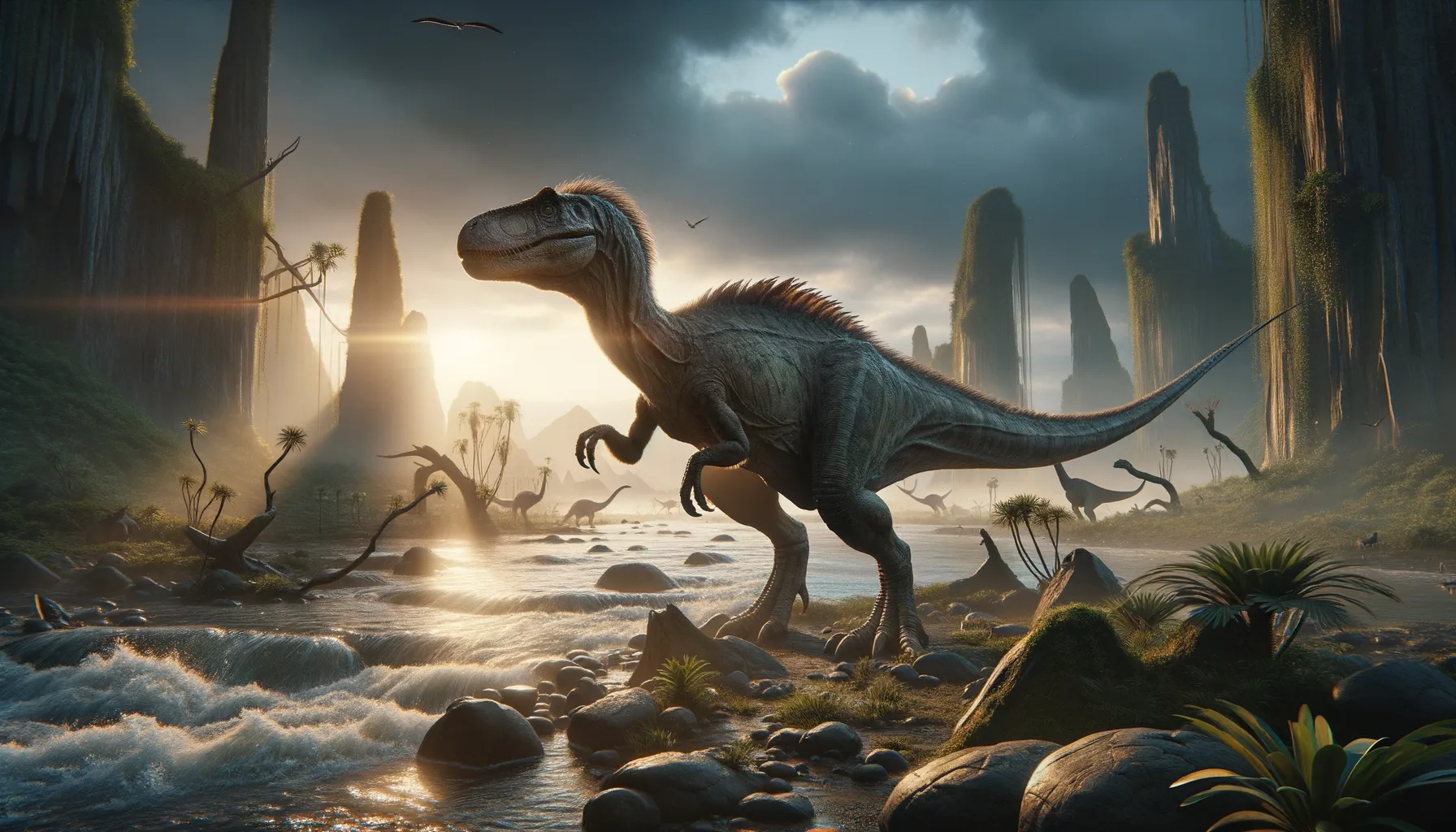
Omnivoropteryx
A versatile survivor of the Cretaceous era.
Period
Cretaceous
Length
Roughly 2 meters from head to tail.
Height
Around 1.2 meters at the hip.
Weight
Approximately 50 kilograms.
Omnivoropteryx is a fascinating dinosaur that walked the Earth during the Cretaceous period. It is known for its ability to adapt its diet to changing environments. With its lightweight body and moderate speed, it was well-suited for evading predators and foraging for diverse food sources. Discovered in China, Omnivoropteryx continues to intrigue paleontologists due to its unique omnivorous diet and evolutionary significance.
Diet
Omnivoropteryx had a varied diet, feeding on plants, insects, and small animals. This flexibility in diet allowed it to thrive in diverse environments.
Hunting
Omnivoropteryx likely used its moderate speed and keen senses to hunt small prey. Its adaptability in both hunting and foraging was a key to its survival.
Environmental challenges
Living during the Cretaceous, Omnivoropteryx faced challenges such as changing climates and varying food availability. It had to be resourceful, often competing with other species for limited resources. Natural disasters like volcanic eruptions may have also posed threats to its habitat, prompting migrations.
Speed
Moderate, capable of short sprints.
Lifespan
Estimated to be around 20 to 30 years.
First discovery
Discovered in 1993 in China.
Fun Facts
- Omnivoropteryx is known as a feathered dinosaur, showcasing the link between dinosaurs and birds.
- This dinosaur lived during the early Cretaceous period, about 125 million years ago.
- Omnivoropteryx had a unique diet, as its name suggests it ate both plants and animals.
- Fossils of Omnivoropteryx have been primarily found in what is now China.
- Despite having wings, Omnivoropteryx likely did not fly strongly like modern birds, but it may have glided.
- The name Omnivoropteryx translates to 'omnivore wing', highlighting its diverse eating habits.
- Omnivoropteryx is part of the broader group of theropod dinosaurs, which includes the ancestors of today's birds.
Growth and Development
Omnivoropteryx exhibited rapid growth during the early stages of its life, reaching maturity in a few years. Its development was influenced by environmental factors such as food availability and climate. As it grew, it developed stronger limbs for better mobility.
Habitat
Omnivoropteryx inhabited forested areas and open plains, where it could find both shelter and diverse food sources. These environments provided protection from large predators and ample opportunities for hunting and foraging. Seasonal changes may have prompted it to migrate in search of optimal living conditions.
Interaction with other species
Omnivoropteryx coexisted with various dinosaurs, often competing for similar resources. It had to navigate complex social dynamics, avoiding larger predators while occasionally forming groups for foraging. Its interactions with herbivores might have been symbiotic at times.
Natural lifespan
Omnivoropteryx had an estimated natural lifespan of 20 to 30 years.
Reproduction
Omnivoropteryx likely laid eggs in nests, with parental care extending to the early stages of its offspring's life. This reproductive strategy ensured higher survival rates of hatchlings in a competitive environment.
Social behaviour
Omnivoropteryx may have exhibited social behaviors such as group foraging, which provided an advantage in spotting predators and finding food. Social interactions likely played a role in learning and transferring skills among individuals.
Fossil locations
Fossils of Omnivoropteryx have primarily been found in China, offering insights into its anatomy and behavior. These sites provide valuable information on its habitat and the ecological conditions of the time.
